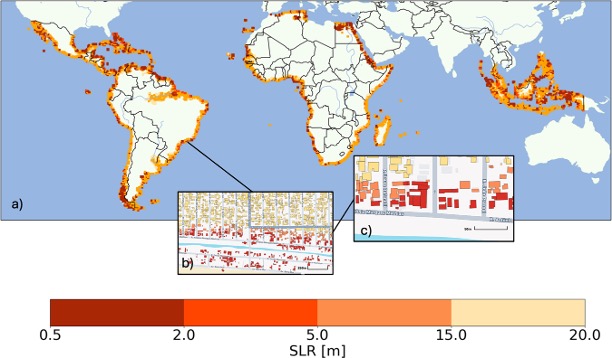Report on Global Deficiencies in Climate-Related Early Warning Systems
Executive Summary
A report from the World Meteorological Organization (WMO) highlights a critical gap in global resilience to climate change, directly impacting the achievement of several Sustainable Development Goals (SDGs). Nearly half of all nations lack multi-hazard early warning systems for extreme weather events. This deficiency disproportionately affects developing countries, where 90 percent of the 2 million climate-related fatalities over the past 50 years have occurred. The absence of these systems undermines progress on SDG 1 (No Poverty), SDG 3 (Good Health and Well-being), SDG 11 (Sustainable Cities and Communities), and SDG 13 (Climate Action) by increasing mortality, destroying infrastructure, and reversing development gains.
Disproportionate Impacts and Alignment with Sustainable Development Goals
Mortality, Vulnerability, and the Imperative for SDG 3
The human cost of inadequate climate adaptation is stark, directly challenging the aims of SDG 3 (Good Health and Well-being). Key findings include:
- Over 2 million people have been killed by weather, water, and climate-related hazards in the last five decades.
- Developing nations account for 90% of these deaths, illustrating a profound global inequality in climate resilience.
- Countries lacking early warning systems experience disaster-related death rates that are six times higher than those with robust systems.
These statistics underscore that access to early warnings is a fundamental component of public health and safety in an era of increasing climate volatility.
Climate Action and Resilience: A Core Tenet of SDG 13
The WMO’s findings are a direct call to intensify efforts under SDG 13 (Climate Action), which mandates strengthening resilience and adaptive capacity to climate-related hazards. The spiraling impacts of more extreme weather events necessitate a global focus on proactive, life-saving measures. The lack of warning systems leaves millions vulnerable, directly contravening the goal of adapting to climate change and reducing its impacts.
Global Status of Early Warning System Implementation
Progress and Persistent Deficiencies
While progress has been made, significant gaps threaten the resilience of communities, a key target of SDG 11 (Sustainable Cities and Communities).
- Positive Development: The number of countries with some form of multi-hazard early warning system has more than doubled, from 52 to 108 over the last decade.
- Capacity Issues: An assessment of 62 countries revealed that half possess only basic capacity, and 16 percent have less than basic capacity.
- Critical Vulnerabilities: The situation is most severe in fragile and conflict-affected contexts, highlighting a critical intersection with SDG 16 (Peace, Justice and Strong Institutions), as climate instability can exacerbate conflict.
Recent Events and the Need for Urgent Action
The year 2025 provided numerous examples of the devastating consequences of extreme weather, reinforcing the need for universal warning system coverage to protect lives and infrastructure.
- Flooding: Major floods have impacted nations including Pakistan, Nigeria, and South Korea.
- Wildfires: Large-scale wildfires have caused destruction in Southern Europe and the United States.
- Glacial Melt: The successful evacuation of the Swiss village of Blatten, prompted by the monitoring of an imminent glacier collapse, serves as a key example of how effective early warning systems save lives and protect communities, fulfilling the mandate of SDG 11.
Conclusion: A Call for Partnership and Investment to Achieve the SDGs
The WMO report concludes that early warning means early action. Empowering nations with the tools to anticipate and react to climate-related hazards is essential for achieving the Sustainable Development Goals. Closing the global gap in early warning systems requires a concerted effort rooted in SDG 17 (Partnerships for the Goals), mobilizing international cooperation, technology transfer, and financial investment to protect the world’s most vulnerable populations.
1. Which SDGs are addressed or connected to the issues highlighted in the article?
- SDG 1: No Poverty – The article highlights the disproportionate impact of climate-related disasters on developing countries, where the poor and vulnerable are most affected.
- SDG 3: Good Health and Well-being – The significant loss of life, with over 2 million people killed by climate-related hazards, directly relates to health and well-being.
- SDG 11: Sustainable Cities and Communities – The focus on disaster risk reduction, protecting infrastructure, and making communities resilient to extreme weather events is a core theme.
- SDG 13: Climate Action – The entire article is centered on the impacts of climate change, the increasing extremity of weather events, and the need for adaptation measures like early-warning systems.
- SDG 17: Partnerships for the Goals – The article implicitly calls for global cooperation to plug gaps in monitoring and forecasting networks, especially to support developing nations.
2. What specific targets under those SDGs can be identified based on the article’s content?
-
SDG 1: No Poverty
- Target 1.5: Build the resilience of the poor and those in vulnerable situations and reduce their exposure and vulnerability to climate-related extreme events and other economic, social and environmental shocks and disasters. The article directly supports this by stating that 90 percent of the 2 million deaths from climate-related hazards occurred in developing countries, emphasizing their high vulnerability.
-
SDG 3: Good Health and Well-being
- Target 3.d: Strengthen the capacity of all countries, in particular developing countries, for early warning, risk reduction and management of national and global health risks. The article’s central point is the lack of early-warning systems in “nearly half of all countries,” which leads to a higher death toll, described as “six times higher in countries without early-warning systems.”
-
SDG 11: Sustainable Cities and Communities
- Target 11.5: By 2030, significantly reduce the number of deaths and the number of people affected and substantially decrease the direct economic losses… caused by disasters… with a focus on protecting the poor and people in vulnerable situations. The article quantifies the death toll (“more than 2 million people in the past 50 years”) and notes the increasing toll on “economic assets and vital infrastructure.”
- Target 11.b: …implement integrated policies and plans towards… adaptation to climate change, resilience to disasters, and develop and implement… holistic disaster risk management at all levels. The call by the World Meteorological Organization (WMO) to plug gaps in monitoring and forecasting networks is a direct call for implementing disaster risk management.
-
SDG 13: Climate Action
- Target 13.1: Strengthen resilience and adaptive capacity to climate-related hazards and natural disasters in all countries. The entire discussion on the necessity of early-warning systems to save lives from events like floods and wildfires is about strengthening resilience and adaptive capacity.
- Target 13.3: Improve education, awareness-raising and human and institutional capacity on climate change… impact reduction and early warning. The article highlights a critical gap in institutional capacity, stating that “nearly half of all countries lack early-warning systems.”
3. Are there any indicators mentioned or implied in the article that can be used to measure progress towards the identified targets?
-
Number of deaths attributed to disasters
The article provides a direct measure for this indicator by stating that “weather, water and climate-related hazards have killed more than 2 million people in the past 50 years.” It further breaks this down by vulnerability, noting that “90 percent of those deaths occurred in developing countries” and that “disaster-related deaths are six times higher in countries without early-warning systems.” This data can be used to track progress on reducing mortality from disasters (Targets 1.5 and 11.5).
-
Number of countries with multi-hazard early warning systems
This indicator is explicitly mentioned and quantified. The article reports that “nearly half of all countries lack early-warning systems” but also notes progress, as the number of countries with such systems “has jumped from 52 to at least 108.” It also provides a qualitative assessment, stating that an evaluation of 62 countries showed “half of them possess only basic capacity and 16 percent have less than basic capacity.” This directly measures national capacity for early warning (Targets 3.d and 13.3).
4. Create a table with three columns titled ‘SDGs, Targets and Indicators” to present the findings from analyzing the article.
| SDGs | Targets | Indicators |
|---|---|---|
| SDG 1: No Poverty | 1.5: Build the resilience of the poor and reduce their vulnerability to climate-related extreme events. | Number of deaths attributed to disasters, with 90% occurring in developing countries. |
| SDG 3: Good Health and Well-being | 3.d: Strengthen the capacity of all countries, particularly developing countries, for early warning and risk reduction. | The number of countries lacking early-warning systems (“nearly half of all countries”). Deaths are “six times higher” in countries without these systems. |
| SDG 11: Sustainable Cities and Communities | 11.5: Significantly reduce the number of deaths and economic losses from disasters. | “More than 2 million people” killed in 50 years; “increasing toll on economic assets and vital infrastructure.” |
| SDG 13: Climate Action | 13.1: Strengthen resilience and adaptive capacity to climate-related hazards. 13.3: Improve institutional capacity on early warning. |
The number of countries with multi-hazard early warning systems has increased from 52 to 108, yet half of the 62 countries assessed have only basic capacity. |
Source: aljazeera.com





